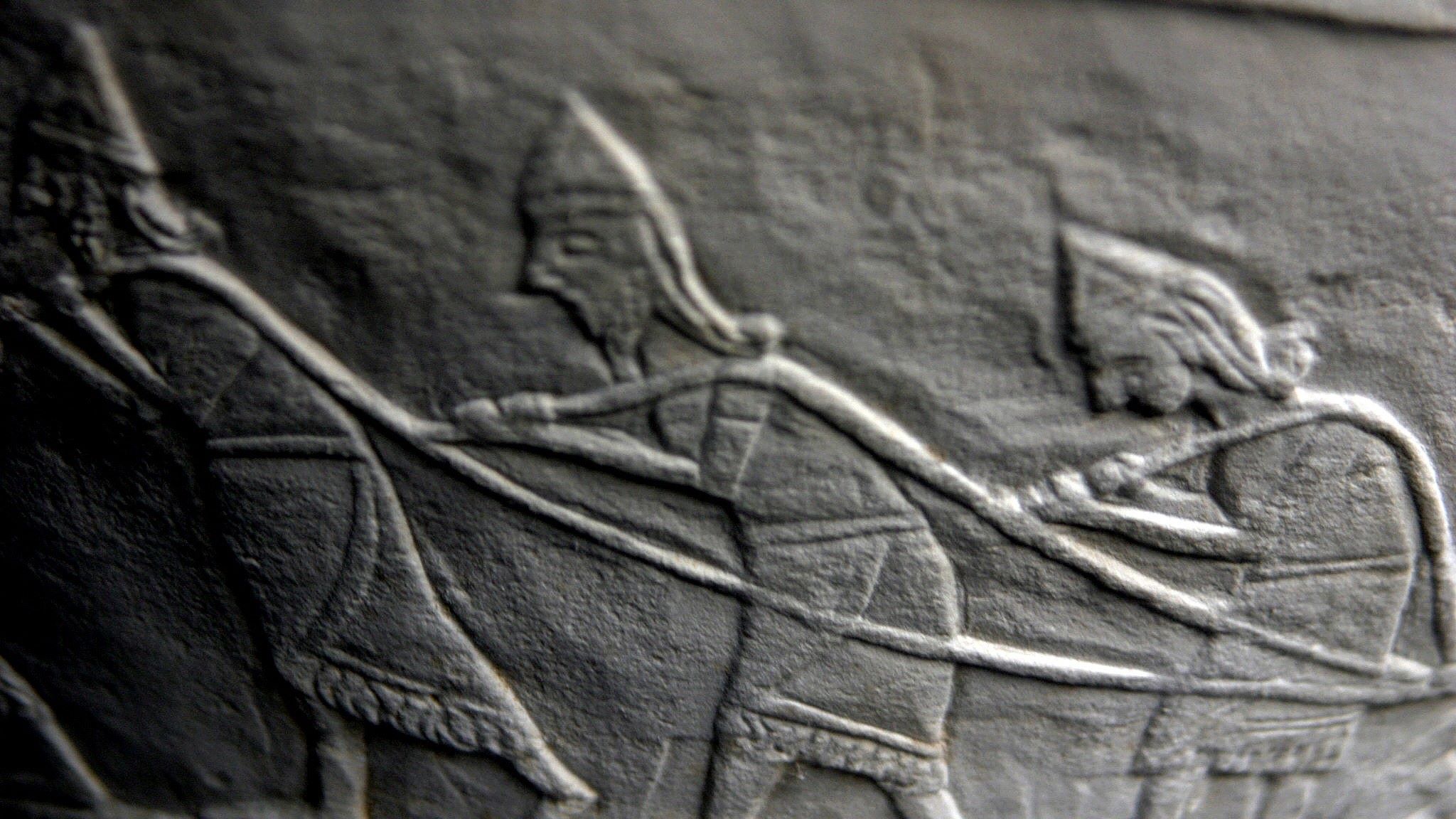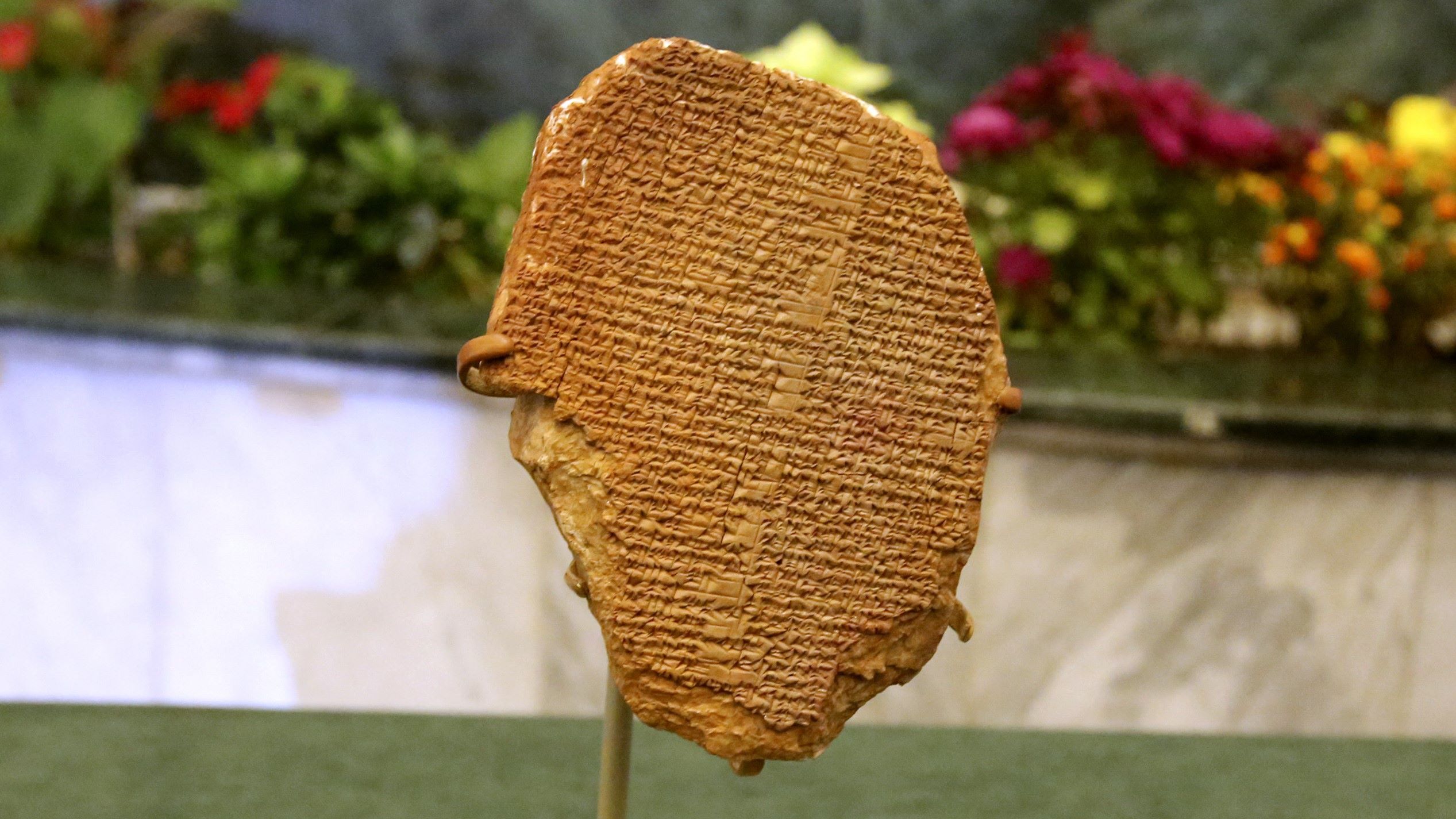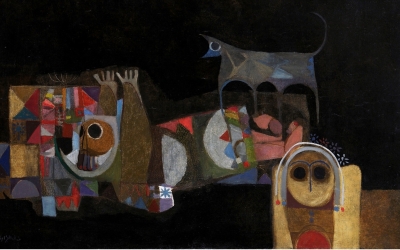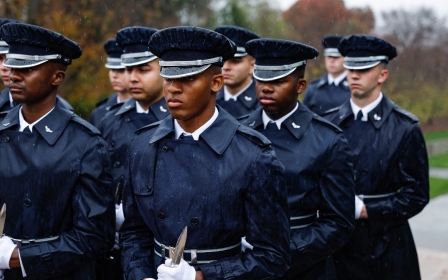Iraq war: When Baghdad fell, the country's treasures were lost

It happened early in the US invasion, and quickly. On 10 April 2003, the first looters entered the National Museum of Iraq as American troops advanced into Baghdad.
Over the next 36 hours, these thieves ransacked the institution, which was founded in 1923 and dedicated to preserving the country’s vast heritage.
The New York Times called the looting of the museum and its invaluable collection of archaeological artefacts - many of which dated to the early days of human culture and civilisation - “one of the greatest cultural disasters in recent Middle Eastern history".
Though the museum staff were able to safely store over 8,000 artefacts with little external support, still more than 15,000 historical objects disappeared within two days.
Photographs taken during the frenzied looting show devastating scenes of wreckage and carelessness, as a glorious past was trampled over and broken.
Thieves - individuals as well as more organised networks, a distinction difficult to measure – used rifles, hammers, clubs, and crowbars to break lockers and protective glass. They stuffed boxes and wheelbarrows and filled their pockets with priceless objects.
Amongst the objects that disappeared were a Sumerian seal representing the Golden Lyre of Ur (smashed in the museum’s car park and later restored), as well as the Vase of Warka and the Mask of Warka, respectively two of the earliest representations of narrative relief and a human figure. Fortunately, both were later returned.
When US troops finally arrived to protect the museum on 16 April, almost a week after looting began, it was already too late.
As reports of this inaction spread, scholars worldwide voiced their outrage. Many had previously advised the military to actively guarantee the museum’s safety.
“At the urging of an Iraqi archaeologist, a group of marines with a tank opened fire above looters' heads and drove them away. But instead of staying to protect the building, the marines left, and the looters returned,” Human Rights Watch reported at the time.
The incident was at first minimised by the US administration. "Is it possible that there were that many vases in the whole country?" Donald Rumsfeld, then defence secretary, told reporters shortly after news of the museum’s looting broke.
These vases were unique; their loss cannot be replaced.
From looting to rampant illicit trafficking
Speaking to Middle East Eye years later, Iraqi-Lebanese writer Joumana Altallal, mourned the missing objects and recalled an event that exemplified the invasion’s brutality.
“Events seemed to be moving so quickly that the depth of the looting did not register then,” she said. “Any feelings of rage and sorrow were replaced by helplessness. Iraqis were preoccupied with their dead or disappeared – a mother’s child, a brother, a father – these were the emotions of Iraqis then, my father says, most were not thinking of the museum.”
Outside Baghdad, other cultural sites were being neglected and destroyed.
Recent events in Iraq’s history should have served as a warning that in times of chaos, looting was a real possibility, and this precedent ought to have been taken more seriously in 2003.
During the 1991 Gulf War, as government forces lost control of southern territories, looters attacked nine regional museums, which hosted their own local collections as well as those from the National Museum that had been moved out of Baghdad for safety.
Around 4,000 objects were estimated to have been stolen or destroyed at this time, including the 3,500-year-old Gilgamesh Tablet, a Sumerian version of the great epic.
Sold on black markets
Most stolen artefacts, whether taken during the Gulf War or the 2003 invasion, have found their way to illicit or legal markets via intermediaries. They were sold in private or online auctions, through channels that are generally less inquisitive about provenance and ownership.
This practice is strictly illegal. While forgery sometimes happens, trafficked objects were often sold for quite meagre sums.
Even in wartime, countries are held to international commitments, a principle that defines our international legal system.
The 1954 Hague Convention spells out the obligations and responsibilities of occupying forces to guarantee the safety and integrity of cultural property.
More incidents of cultural damage were recorded when upwards of 2,000 US and Polish troops used the archaeological site of Babylon as a military base, which Unesco described as a “grave encroachment".
The question of cultural heritage was largely absent from the pre-invasion discussions of US-based policy-makers, notes Lawrence Rothfield, author of The Rape of Mesopotamia: Behind the Looting of the Iraq Museum.
Detailed plans to protect Iraq’s oil fields did exist though and the oil ministry's buildings were left untouched in the chaos of Baghdad's fall.
Professor Elizabeth Stone, an archaeologist at the Department of Anthropology at Stony Brook University, used satellite-based imagery to estimate that over 40 percent of nearly 1,500 sites surveyed in southern Iraq demonstrated evidence of devastation by December 2003.
From the images, Stone identified a large number of illegal excavations through the presence of pits or dug holes, a tragedy that was enabled as sites were mostly left unprotected during the early years of conflict.
Cultural property became a target of armed groups, such as the Islamic State
There were also anecdotal reports of American soldiers and contractors returning home with cultural trophies; “souvenirs” of a grim and brutish entitlement to morsels of Iraq’s past.
Iraqi historical objects have turned up in several countries since, such as the United States, the United Kingdom, and the Netherlands.
It seems that no lessons were learned from the 2003 looting, and there were further looting attempts that threatened the National Museum.
In the security vacuum that followed the US withdrawal, cultural property became a target of armed groups, such as the Islamic State.
The group filmed their destruction of historic sites in northern Iraq to create cruel propaganda videos.
Scenes of its fighters smashing Assyrian heritage inside Mosul’s museum in February 2015 still serve as a painful reminder that art and culture are political.
Islamic State also organised a “massive and methodical looting” to assert their dominance over Iraq’s cultural minorities and generate illicit revenues from “blood antiquities” that was once estimated to account for up to 20 percent of the group’s income.
A slow road towards restitution
Images of the National Museum being ransacked in 2003 deeply shocked the public, a sentiment that quickly translated into anger and solidarity.
In response, Iraqi and international partners organised to catalogue, number, and recover the missing items. It was a necessary task as many of the spoils were taken from the museum’s storage, where objects had not yet been properly recorded.
Chicago’s Oriental Institute immediately launched the “Lost Treasures of Iraq,” an online information page and database to record, visualise, and report objects missing from Iraq’s collections.
To keep their memory alive, US-based artist of Iraqi descent Michael Rakowitz has recreated several of the lost objects under his project “The Invisible Enemy Should Not Exist” (2007-ongoing) using data from the Oriental Institute’s database.
In papier-mache sculptures, Rakowitz has reconstructed reliefs from Nimrud’s ancient palace and votive clay statuettes that serve as surrogates of exile, cultural dispossession, and a lost home.
In 2018, Rakowitz installed a 14-foot-long "lamassu" - a sculpture representing a human-headed winged bull that is an Assyrian protective symbol - on the fourth plinth of Trafalgar Square in front of the UK’s National Gallery.
The artwork reinterprets a 2,700-year-old object that once guarded the gates of ancient Nineveh, which was destroyed by Islamic State in 2015.
His efforts have helped to keep the issue of the theft and destruction of Iraq’s cultural treasures alive in the public consciousness, which is vital if looted artefacts are ever to be returned.
For instance, through an international investigation, a broken statue of Sumerian King Entemena of Lagash was recovered in New York in 2006, and other restitutions have periodically been announced since.
Around 17,000 antiquities were returned to Iraq in 2021, most of which were ancient clay tablets held by a young US-based, evangelical-leaning institution, the Museum of the Bible, as well as by Cornell University.
Additionally, four 4,000-year-old cylinder seals looted during the 2003 ransacking of the National Museum in Baghdad were also returned last December.
These are just some examples of the most recent cases, and while voluntary in nature, fines and lawsuits have no doubt accelerated the objects’ restitutions.
The reopening of Iraq’s National Museum in 2015 was highly anticipated. But the museum remained closed for a further three years due to the large-scale protests of 2019 and the Covid-19 pandemic, and only finally opened in early 2022.
But the search continues for around half of its missing objects.
“Today, the challenge to continue protecting heritage in Iraq is not just related to damage caused during past conflicts, but also to the deleterious impact that climate change is having on the country’s patrimony,” said Valery Freland, executive director of the International Alliance for the Protection of Heritage in Conflict Areas (ALIPH).
His organisation has supported nearly 30 rehabilitation projects in Iraq since 2018.
Some people may argue that looting has always accompanied warfare.
But far from being insignificant collateral damage, the cultural destruction of Iraq during and after the US-led invasion of Iraq in 2003 was an act of violence, a loss, and an injustice that is still deeply felt today, despite ongoing legal efforts and sporadic restitutions.
It remains one of the greatest cultural disasters in recent Middle Eastern history.
This article is available in French on Middle East Eye French edition.
Middle East Eye delivers independent and unrivalled coverage and analysis of the Middle East, North Africa and beyond. To learn more about republishing this content and the associated fees, please fill out this form. More about MEE can be found here.









